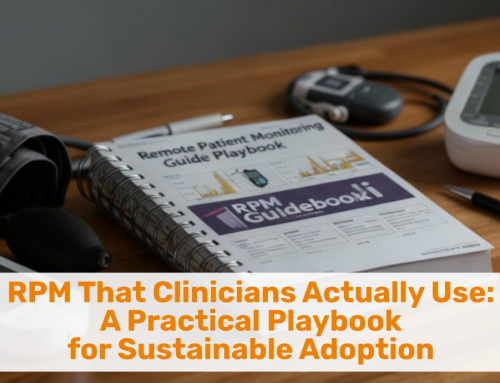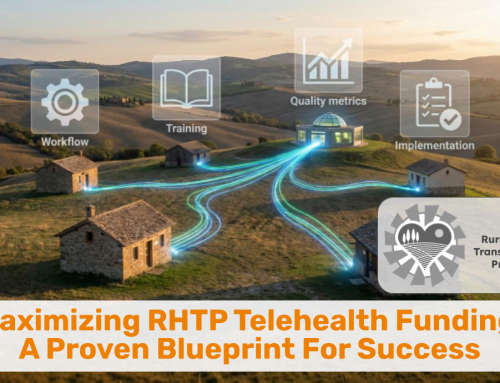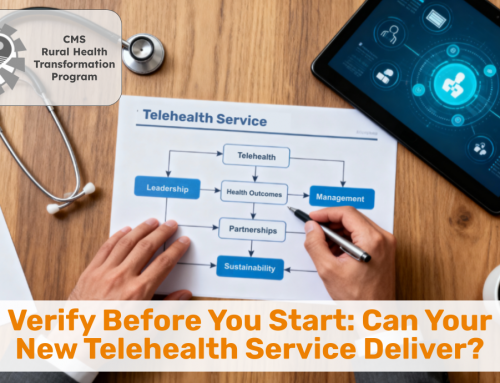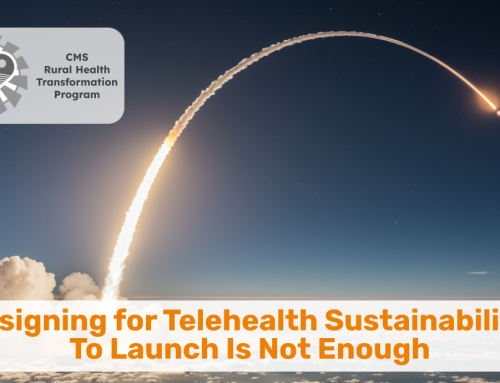When most organizations think about launching or relaunching a telehealth program (or any type of digital health innovation), the default focus is on logistics — buying equipment & licenses, figuring out policies, or provider training.
But what if you start your rollout with a mindset of validating assumptions?
Not vague optimism or wishful thinking — but clear, testable assumptions. Assumptions that are prioritized, scored, and agreed upon by the very people responsible for delivering care.
That’s exactly what Moses Lake Community Health Center (MLCHC), a Federally Qualified Health Center in North Central Washington, did when they set out to reboot their virtual care efforts — and it’s reshaping how to think about sustainable telehealth rollouts.
Today’s case study from the frontlines builds on last week’s article, “Are you Still Using Telehealth Pilots?”, where we introduced Ingenium’s Proof-of-Concept (PoC) framework for designing intentional rollouts of scalable telehealth services.
From Post-COVID Drift to Strategic Reboot
Like many FQHCs, MLCHC launched telehealth quickly in response to the COVID-19 crisis. But as in-person care returned, their virtual care use declined — held back by inconsistent workflows, unclear policies, a lack of clinician and staff training, and a technology that was cumbersome to use,.
In Spring 2025, the organization relaunched telehealth under the banner of Connected Health Services (CHS). With direct sponsorship from the CEO, strong leadership from the COO, and support from a newly appointed CHS Coordinator, the Ingenium team helped the team to approach the roll out differently than similar efforts in the past.
For starters, we didn’t start with a focus on rolling out the technology and handing out licenses.
We started with a simple question: What needs to be true so we can trust that this will work well for everyone?
That question launched a Proof-of-Concept — using the five core steps we introduced last week:
-
Identify Assumptions – What all needs to be true for the solution to succeed?
-
Prioritize Assumptions – Which ones are most critical or at risk?
-
Create Measurement Systems – What metrics will confirm if assumptions hold?
-
Set Goals – What success thresholds define each assumption as validated?
-
Launch the PoC – Collect, analyze, and refine until assumptions are met.



The Six Foundations: Framing Assumptions
The CHS team organized their assumptions around six foundational categories of assumptions:
(1) Clinical – Will providers feel empowered and supported?
(2) Patient – Will patients have the means and confidence to participate?
(3) Operational – Will workflows and staff capacity align?
(4) Technology – Will systems and support keep care running smoothly?
(5) Financial – Will the model be viable under current reimbursement?
(6) Regulatory & Compliance – Will documentation and consent meet standards?
Each assumption was written as a measurable, observable statement — not just a hope, but a hypothesis that could be validated, that could be proven.
Examples included:
-
“Providers feel empowered to conduct video visits when clinically appropriate.”
-
“Patients are comfortable using the Video Visit platform.”
-
“Timely IT support is available during operational hours.
…and more.
Scoring What Matters Most
Rather than treating all assumptions equally, the team prioritized them using a straight-forward scoring model:
-
Impact – How critical is this assumption to success?
-
Risk – What’s the cost if this assumption proves false?
Each stakeholder — including the COO and CHS Coordinator — scored the assumptions independently and, after multiplying the score for impact and risk all responses were averaged. Any assumption with a combined score above an agreed-on threshold became a priority assumption: the “must-haves” for program success.
The 8 Assumptions That Shaped the Rollout
From dozens of considerations, these eight assumptions rose to the top:
-
Providers feel empowered to conduct video visits when clinically appropriate
-
Patients feel they receive the same standard of care through video
-
Providers feel confident performing TeleExams
-
Patients are comfortable using the Video Visit platform
-
Patients have access to the right technology and a private space
-
Patients receive clear support before, during, and after the visit
-
The IT team is responsive and reliable
-
Timely IT support is available during operating hours
This set of priority assumptions now drove everything: the training, the communication, the workflow design, and feedback loops.
Why Prioritized Assumptions Matter
Most telehealth programs don’t fail because of bad platforms — they fail because of untested assumptions and misaligned expectations, which leads to ill-defined workflows and ineffective training (if even present).
By making assumptions explicit and engaging key stakeholders in the process, Moses Lake CHC has been building more than a service offering — they have been building resilience, clarity, and alignment from the ground up into the new service.
And this isn’t just theory. These assumptions are now being used to assess operational performance in real-time against the predefined thresholds that we declared as indicating “success” — turning strategy into execution.
Your Turn: Leading with Assumptions
If the rollout, the growth, or the widespread adoption of your telehealth or digital health service (including vendor implementations) is stalling or stuck, consider calling a full stop and re-launch (typically in a matter of a few weeks) using the proof-of-concept approach.
Ask these questions:
-
What assumptions are we making about our providers, patients, and infrastructure?
-
Which ones are most essential to success?
-
Which ones carry the most risk if we’re wrong?
This is where strategy begins — with clarity, prioritization, and a willingness to test and learn.
Stop guessing. Start validating.
Have you tried a similar approach in your organization? I’d love to hear how you prioritized your assumptions — and what surprised you along the way. Reach out on LinkedIn or send me a text at (657) 464-3648.








To receive articles like these in your Inbox every week, you can subscribe to Christian’s Telehealth Tuesday Newsletter.
Christian Milaster and his team optimize Telehealth Services for health systems and physician practices. Christian is the Founder and President of Ingenium Digital Health Advisors where he and his expert consortium partner with healthcare leaders to enable the delivery of extraordinary care.
Contact Christian by phone or text at 657-464-3648, via email, or video chat.






